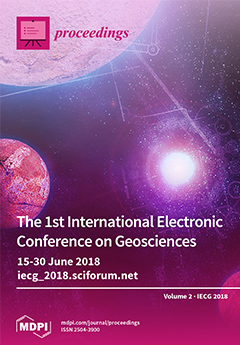Need Help?
Proceedings, 2018, IECG 2018
The 1st International Electronic Conference on Geosciences
Online | 15–30 June 2018
Issue Editor: Jesús Martínez Frías, Instituto de Geociencias, Spain
- Issues are regarded as officially published after their release is announced to the table of contents alert mailing list.
- You may sign up for e-mail alerts to receive table of contents of newly released issues.
- PDF is the official format for papers published in both, html and pdf forms. To view the papers in pdf format, click on the "PDF Full-text" link, and use the free Adobe Reader to open them.
Cover Story (view full-size image):
This issue of Proceedings gathers the papers presented at the 1st International Electronic Conference on Geosciences, which collected contributions concerning five thematic areas: planetary
[...] Read more.
This issue of Proceedings gathers the papers presented at the 1st International Electronic Conference on Geosciences, which collected contributions concerning five thematic areas: planetary geosciences, Medical Geology, Education and Capacity Building in Geosciences, Environmental Geochemistry: Geogenic versus Anthropogenic Source, Non-Destructive Characterization of Geologic Materials. We would like to thank all attendees for their participation and all conference committee members for reviewing the papers.
Previous Issue
Next Issue
Issue View Metrics
Multiple requests from the same IP address are counted as one view.



